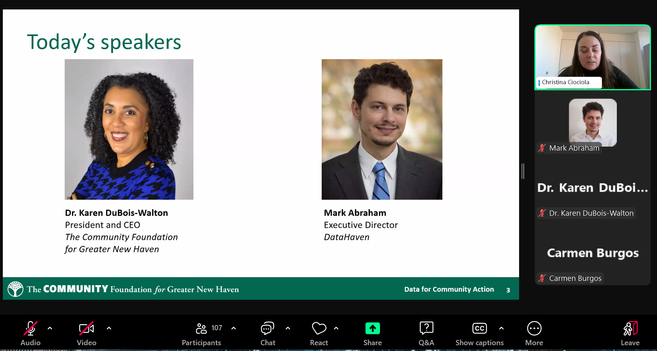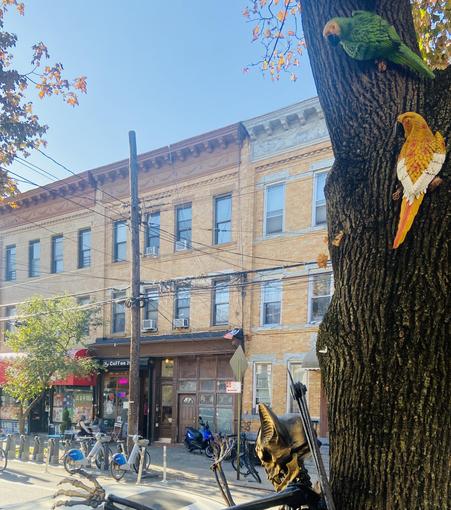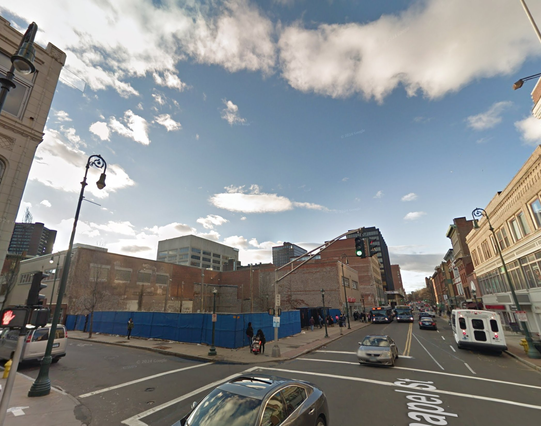More than 130 people attended CFGNH's briefing today on results from the 2024 DataHaven Community Wellbeing Survey. Based on live interviews with over 50,000 randomly-selected residents since 2015, the data help understand key trends in social support, health, infrastructure, and economic security. #Connecticut
New Haven resident with a passion for community information, cities, and health. Executive Director, DataHaven (http://ctdatahaven.org, here at @ctdata). Kellogg Foundation racial equity fellow. Opinions here are my own, not views of my employer.
Trying B S K Y again for a bit, search "urbandata" to find me. #twittermigration
The #urbanism of #Ridgewood #Queens #NYC #Halloween
In case you missed our recent newsletter:
https://mailchi.mp/e9fd7f8df11c/national-award-for-town-data-viewer-30th-anniversary-new-report
(13/n) Large mid-block parking lot and empty corner lot ▶️ Two 6-8 story mixed-use buildings with 166 apartments and ground floor retail by CA Ventures
Photos: Google streetview, New Haven Independent https://www.newhavenindependent.org/article/chapel_st
New Haven #NHV #newhaven #connecticut
“a rising tide of #slop has begun to swamp most of what we think of as the internet [& now advertising, books, set design, etc], overrunning the biggest platforms with cheap fakes and drivel, seeming to crowd out human creativity and intentionality”
https://nymag.com/intelligencer/article/ai-generated-content-internet-online-slop-spam.html #ai
Sampson's "Great American City" still has the best illustrations of the heterogeneity of social conditions in low-income neighborhoods, but these maps are also helpful in understanding this dynamic. @familyunequal
Addendum: There are situations (involving crosswalks, multiple vehicles around you in passing lanes, etc) where a full stop at a green light could be a bad idea. For those, gradually slow to 10-15 mph well in advance of the light, to make it easier to come to the complete stop that is necessary to save your life if needed. Luckily, these situations are more common in urban areas where roads are safer to begin with.
9. Slow down and use mass transit whenever possible.
10. Remember that crashes are the number one cause of death within many/most demographic groups in the US.
What other tips could help people reduce their odds of dying in a road crash? #roadsafety #publichealth #MedMastodon
7. Leave at least 5 seconds of travel time between you and the vehicle in front of you, and longer than that if the weather is poor.
8. Drowsy driving/biking, or driving under emotional stress, can be as dangerous as drunk driving. New parents who were up all night with a baby are at particularly high risk. If you have to, drive slow and check for cross traffic and pedestrians a few extra times at each turn.
5. In areas with many pedestrians, or parked cars that are hard to see around, always limit your driving speed to 15 miles per hour. Someone (a child or adult with disabilities, perhaps) may walk out into the street at any time.
6. Never, ever trust other people’s turn signals when turning onto a road or passing. The driver might have just left theirs on.
4. Since not everyone will drive like you, always leave tons of stopping distance between you and the car behind you, especially when approaching intersections, so you can stop immediately if needed. If cars behind you are getting too close, slow down long before you reach any intersection.
2. Always treat green lights like stop signs. Always pause and be ready to completely stop before entering the intersection, even on quiet streets you are familiar with.
3. Pretend that stop signs don’t exist. Slow or stop at every intersection on streets that have stop signs.
1. Live in an urban area, preferably one with relatively slow speeds on local streets. Crashes in rural areas tend to be much more severe than crashes in cities. States like NY and MA have just 1/3 to 1/4 the traffic death rate of more rural states like Mississippi, Montana, SC.
The US now has a higher road crash death rate than Russia. Here are some tips on how to survive US roads (thread) #roadsafety #publichealth
Mapping the local impact of a proposed state #childtaxcredit https://ctnewsjunkie.com/2024/02/23/debate-brews-over-state-level-child-tax-credit/ #Connecticut
One of the nice things about using raised crosswalks to commute to work: On snowy days, there are no slush lakes to cross!
#snow #connecticut #newhaven #urbanism #walkability #trafficcalming
“15 years ago, real-estate agents had 2.2 million vacant housing units available to show prospective buyers. That number… now sits at just 732,000, despite the country having added 30 million people to its population.”
https://www.theatlantic.com/ideas/archive/2023/11/buying-house-market-shortage/676088/ #affordablehousing Article by Annie Lowrey @annielowrey@bird.makeup @annielowrey@news.twtr.plus
Rents are so high because people have decided that they’d like to live alone, and we’ve built nowhere near enough new housing for that to happen
https://www.businessinsider.com/why-apartment-rent-high-pandemic-big-cities-household-formation-roommates-2023-5 #affordablehousing #urbanism



